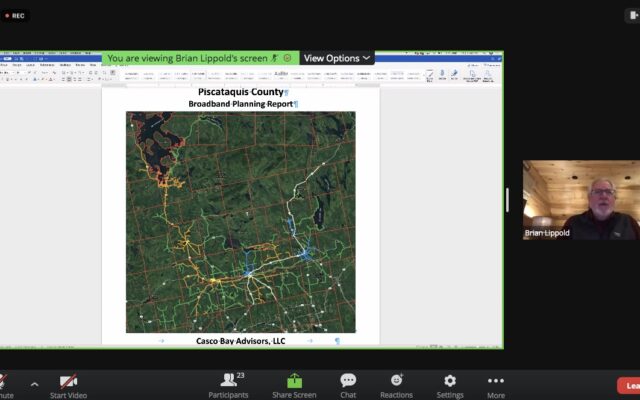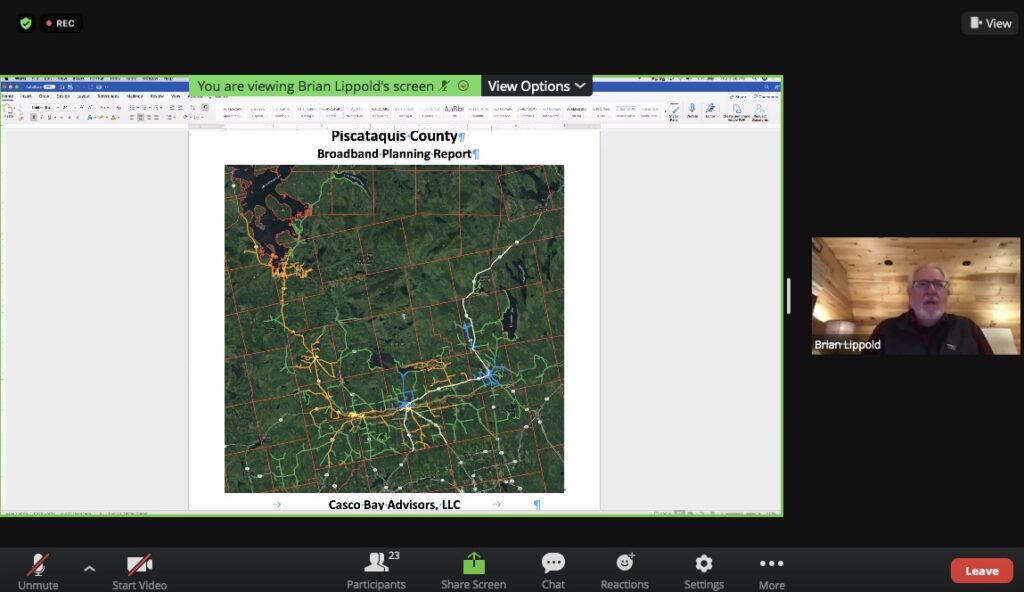
It will take $27 million to expand internet in Piscataquis County, a new study shows
It will cost an estimated $27 million to expand broadband coverage to unserved areas in Piscataquis County, according to a new broadband planning report.
The Piscataquis County Economic Development Council pursued the report, which cost $60,000 and began about three to four months ago. The council secured a $30,000 grant from the ConnectMaine Authority, which was paired with $30,000 from towns and municipalities’ American Rescue Plan Act monies to fund it.
Internet access in rural areas of Maine has long been an issue for businesses and most recently, for students who are sent home from schools for remote learning during COVID-19 outbreaks. Consulting firm Casco Bay Advisors assessed broadband infrastructure throughout Piscataquis County and identified gaps and how to fill them. The report suggests securing strong community relationships and creating a county broadband advisory committee, along with securing ample funding, as next steps to improving broadband countywide.

“It’s time to establish or revisit your goals and vision for what you want to accomplish in the county. … It’s incredibly important that each of the local communities is engaged in this process,” said Casco Bay Advisors President Brian Lippold, who presented the study’s findings during a PCEDC webinar Thursday.
The report focused on 33 towns and townships considered unserved – meaning they do not have fiber to the home or cable TV options – which were selected because a local telephone company provides services to the areas.
Casco Bay Advisors also pulled data from the state’s 911 system to help identify locations of potential subscribers, though the database is “notoriously inaccurate,” Lippold said. Those who worked on the report compared the data to aerial imagery to find locations without a 911 address.
“Then we go out into the field with these paper maps and drive every roadway and long driveway to make sure we’ve identified all of the assets,” he said, adding they noted cable TV infrastructure and fiber optic cables used for either transmission or fiber-to-the-home service delivery.
The firm then split the 33 locations into three groups — the north, west/central and east groups – based on networking considerations. Three locations were excluded from the report because they had too few subscribers or lacked commercial power distribution that could feasibly provide landline services, the report said.
“We don’t want to try to pursue solutions on an individual town basis,” Lippold said. “That’s 33 towns and townships that would be very, very difficult to get everyone served. If we look at these in groupings, it builds scale and service providers are more interested … to come in and fill these gaps.”
Casco Bay Advisors pursued a similar project in Somerset County, where 58 towns and townships were broken into five groups. One group largely had fiber available to homes. The county received proposals from a service provider interested in serving three of the groups, and two others wanted to serve countywide, Lippold said.
Lippold also presented GIS maps, which used four colors to highlight areas where there is fiber, TV infrastructure, both fiber and TV infrastructure and unserved areas.
Nearly 670 locations are considered “off the grid,” he said, though it’s hard to tell if they are occupied. The firm takes note of roads that lack power distribution. It relies on 911 data and aerial imagery, which shows size and details like vehicles in a driveway, to decide if a place is a likely subscriber location.
“I’d sure like to see an overlay of how many kids are in schools who live in those homes,” said Chris Maas, a Dover-Foxcroft resident and PCEDC council member, during the webinar.
The report also provides cost estimates, such as $400 per utility pole to get them ready for new attachments, and $25,000 per mile to install fiber to the optic backbone. Casco Bay Advisors assumes there are 33 utility poles per mile, based on past projects.
Potential strategies to extend service in the 33 locations are included in the report. Funding for the project could come from a variety of sources, with “the private sector, federal, state and local government each contributing 25 percent of the costs on average,” the report said.
Lippold suggested the county and municipalities look at ARPA funding, plus grants from ConnectMaine Authority and the Maine Connectivity Authority. Piscataquis County is receiving about $3.2 million in ARPA funds.
The report breaks down a hypothetical funding strategy: private service providers would contribute 37 percent, state and federal funding would contribute 49 percent, Piscataquis County would contribute 7 percent and local municipalities would contribute 7 percent.
Lesley Fernow, a Dover-Foxcroft resident and former president of the Maine Highlands Senior Center, said internet access should be thought of as electricity when it became widely available nationwide.
“What you’ve all been talking about is the business aspect of it. … The nature of the conversation implies that this is elective, that each community has a choice,” she said. “I really think we should be looking at this as an expectation that everybody will [have it]. In the future, in the next five years, even now, you have to have it.”
For next steps, the report urges a Piscataquis County Broadband Advisory Committee consisting of municipal leaders, community stakeholders and business leaders; reserving available ARPA funding; and negotiating public-private partnerships with service providers.
John Shea, PCEDC executive director, worked with local governments and Select Boards to secure support and funding for the report. That was the easy part, Lippold said.
“Getting all of the towns on board in this next step phase is hard,” he said, adding that on the flip side, some broadband expansion throughout Piscataquis County has worked on a town-by-town basis in the past. “If you want to do this quickly … and most efficiently, going in as groups is the best way to go.”
The report is available for the public and municipalities to view. It will be posted to the Piscataquis Economic Development Council website.